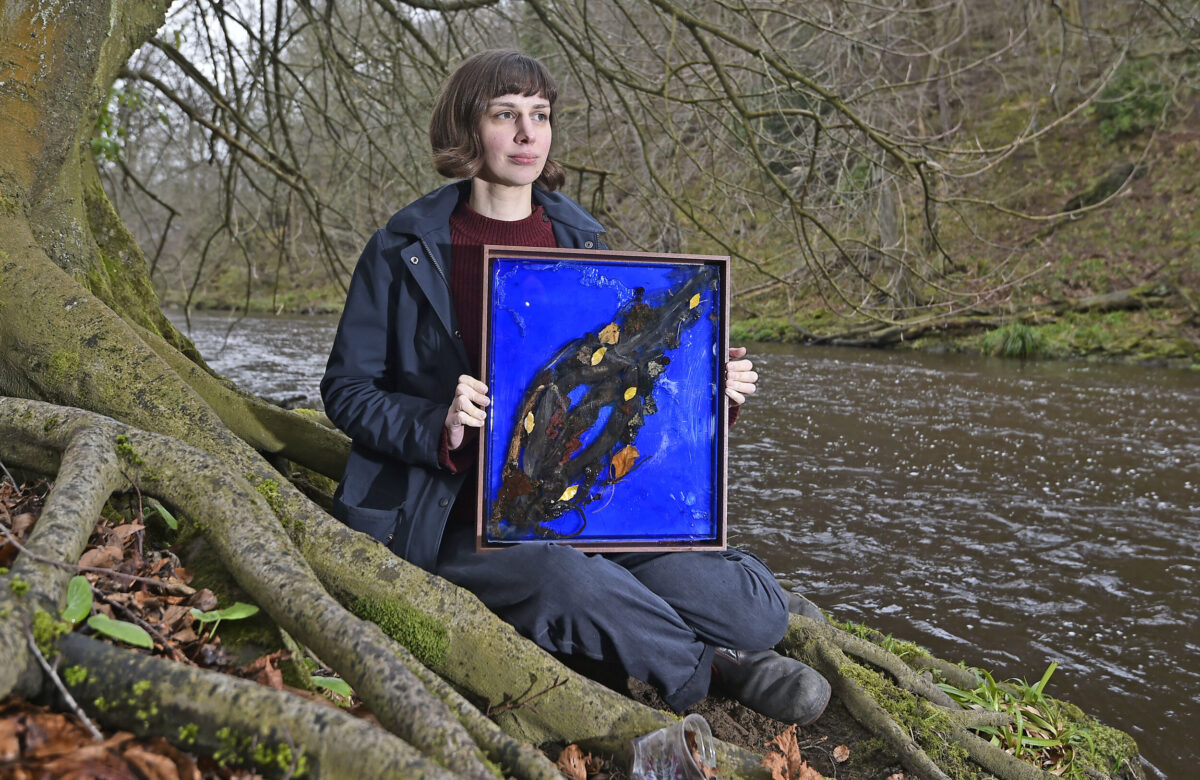by Annie Lord
Annie Lord is collaborating with A+E to explore the theme of the Regenerative Cathedral. Working from St Mary’s Cathedral on Palmerston Place, Annie is developing a story which responds to the climate and ecological crisis, inspired by the buildings, its geography and past and present communities. Annie shares the thinking behind her work below. A podcast of the finished story will be available in early 2023.
As a storyteller I use archives to get to know a place – to understand its origin. The archive at St Mary’s is housed in a small room at the top of a narrow, spiral staircase. In places the stone steps have been worn into a gentle curve – the concave shape reflecting the many feet that have walked up and down this tight passageway. As I walk up them, I focus on one step at a time, trying to quell the sense of rising claustrophobia. I feel a palpable sense of relief when the door to the archive is swung open, light flooding into the space. Here, material relating to St Mary’s is neatly categorised – everything from commemorative articles marking the consecration of the Cathedral to documents about the day to day running of the space. It is a place of preservation.
Preservation: the act of keeping something the same or of preventing it from being damaged
At a time of climate and ecological crisis I keep returning to this idea of preservation.
What is it that we want to hold onto? And how do we balance this with the continual need to adapt and develop to meet our current living conditions? Preservation implies stillness and stasis, but this is not quite the whole story. To preserve something requires continual acts of care. It requires thoughtfulness and intent – an active, rather than passive state. I come across this theme again when I visit the Song School. Built in the 1880s as a place for the choir to practice, its walls are painted with beautiful murals by the artist Phoebe Anna Traquair. In a guide to the decorations published soon after their completion in 1892 it is noted that, ‘The idea of the decoration is to fill the place, so to speak, with visible song…’
In places the mural is partially obscured by thin sheets of paper which are pasted onto its surface. These are the work of the restorers – an act of preservation. It is a visible act of care, one which temporarily disrupts the viewing of the paintings, but in the longer term will help to protect it for future generations.
When I first visit the murals, I am struck by how Traquair captures the humanity of the figures she paints. I am drawn to the painted choir in particular. The group appear as though seen in life; their gestures caught in moments of spontaneity. Mouths open, depicted in song. And then there are the boys whose eyes stare out from the painting, as though their attention has been drawn by a glimmer of activity in the room. Traquair based her painting on the real-life choir who sang here in the latter part of the 19th century. She conserves their likenesses for us.
In telling the story of St Mary’s Cathedral, I not only need to look at its past, but also consider its future – what will this place be in 50, 100, 1000 years’ time?
Early in the new year I will meet with some of the people who are involved in the community of St Mary’s. We’ll discuss what this place means to them, and their hopes for its future. What should we preserve?
Storytellers Collective
Annie Lord is an artist and writer based in Edinburgh. Read more about her work here: annielord.co.uk

